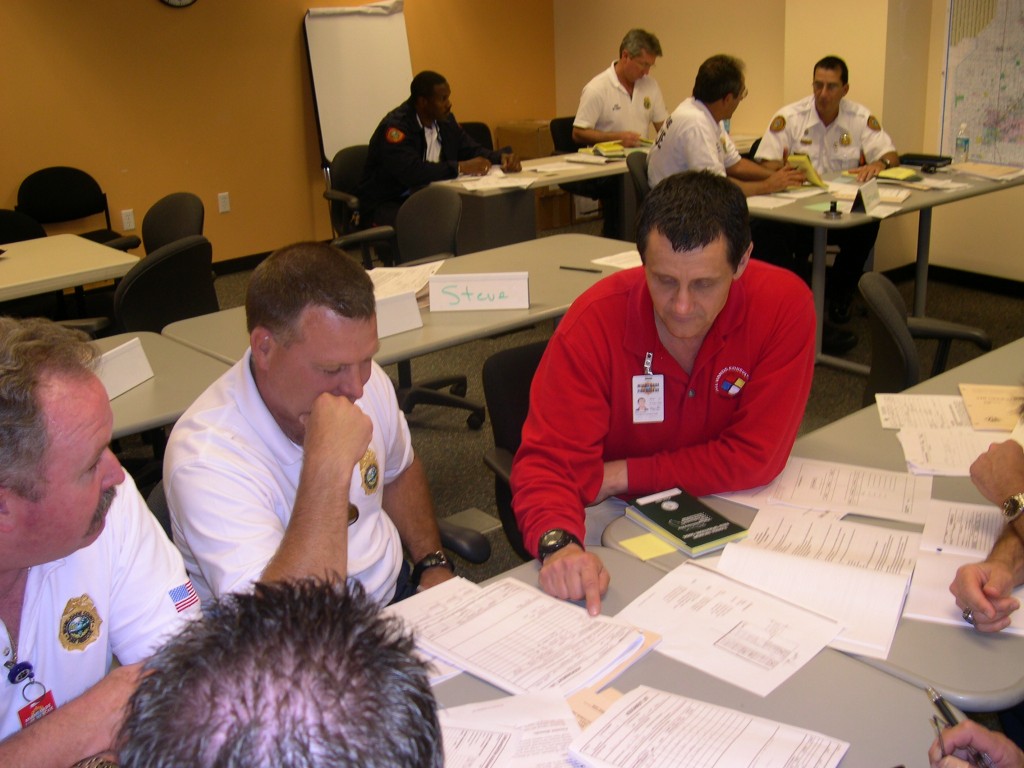Development of a Mitigation Plan
Mitigation efforts include activities that will prevent or reduce the impact of a disaster on people, property and environment. Efforts include building codes, land use planning, training and education, structural and non-structural safety measures. Federal policies require a formal mitigation program implementation plan any time an area is subject of a Presidential Disaster Declaration and federal disaster monies are received. This program requires:

- Working knowledge of related federal regulations, guidelines, reports.
- Significant follow through for the duration of the recovery phase.
- Ability to implement this structure during emergencies.
- Ability to effectively manage the system during the response and recovery phases.
There are three things that a jurisdiction can do to mitigate hazards:
- Act on the hazard (the cause of the emergency).
- Act on the people (the population effected by the emergency).
- Act on the interaction between the hazard and the people.
Mitigation activities may be undertaken before a hazard event or afterwards. Pre-event mitigation activities are highly desirable, since the period immediately following a hazard event is often a difficult one in which to make mitigation decisions. If put in place soon enough, these activities can sometimes reduce the damage caused by the next event. Mitigation efforts can break the cycle of repeated destruction resulting from hazard events. Mitigation typically is a difficult, long-term task, but is well worth the effort.
Local Mitigation Strategy
In accordance with Disaster Management Act of 2000 (DMA2K) mitigation requirements, All Hands assists local governments in the development of a Local Mitigation Strategy (LMS). A mitigation plan determination is based upon the review of each of the following plan criteria as required in 44 CFR Part 201. Examples of approved FEMA plan determinations are part of this process. We will ensure compliance with DMA2K through a comprehensive planning process that includes the following elements:
- Adoption by the Local Governing Body
- Multi-Jurisdictional Plan Adoption
- Multi-Jurisdictional Planning Participation
- Documentation of Planning Process
- Identifying Hazards
- Profiling Hazard events
- Assessing Vulnerability: Identifying Assets
- Assessing Vulnerability: Estimating Potential Losses
- Assessing Vulnerability: Analyzing Development Trends
- Multi-Jurisdictional Risk Assessment
- Local Hazard Mitigation Goals
- Identification and Analysis of Mitigation Measures
- Implementation of Mitigation Measures
- Multi-Jurisdictional Mitigation Strategy
- Monitoring, Evaluating, and Updating the Plan
- Implementation through Existing Programs
- Continued Public Involvement
The mitigation planning process should result in the establishment of “mitigation functions” that contain a full range of mitigation strategies, activities and projects that are appropriate to the jurisdiction and that are based on a realistic hazard vulnerability assessment. Categories of “mitigation functions” include the following. Specific strategies with associated activities and projects are indicated within these functions. A lead agency and support agencies and organizations are indicated. Mitigation functions include:
- Building Design, Codes, Use Regulations.
- Community Preparedness Activities.
- Financial and Tax Incentives.
- Hazard Control and Protective Works.
- Insurance Programs.
- Hazard Studies and Mapping.
- Environmental Protection.
- Land Use Planning/Management.
- Property Protection.
- Laws/Ordinances/Rules/Inspections.
- Mitigation Committee.
- Protection/Retrofit of Infrastructure and Critical Facilities.
- Public Information: Awareness, Training, Education.
- Public Health and Emergency Medical Care, Education.
- Public Protection.
- Emergency Services Measures.
- Science and Technology.
- Recovery Planning.
Our Approach
All Hands believes that a LMS should be developed using a unified approach among community members for dealing with identified hazards and hazard management problems. The LMS serves as the tool to direct the community’s ongoing efforts to reduce vulnerability to the impacts produced by both the natural and man-made hazards. The LMS will also help establish funding priorities for currently proposed mitigation projects and develop priority mitigation projects to be completed with such mitigation assistance funds as may be made available.
The implementation of mitigation programs is a key component to achieving a “sustainable community,” one in which people, businesses, and institutions are protected from the disruptions and impacts of emergencies and disasters. Hazard mitigation planning must be closely coordinated with a community’s overall planning and development efforts intended to provide its citizens a safe, healthy and prosperous place to live and work.
Local Mitigation Plan objectives include:
- Improve local government’s resistance to damage from known natural, technological, and societal hazards.
- Educate the public.
- Place local government in a position to compete more effectively for pre and post-disaster mitigation funding.
- Reduce the cost of disasters.
- Speed community recovery when disasters occur.
Local government benefits of adopting and maintaining the LMS include:
- Make certain funding sources available to complete the identified mitigation initiatives that would not otherwise be there if the strategy was not in place.
- Reduce the local government’s cost sharing ratio necessary to obtain certain types of post-disaster grant funding.
- Ease the receipt of post-disaster state and federal funding because the list of mitigation initiatives is already identified.
- Support effective pre and post-disaster decision making efforts.
- Lessen local government’s vulnerability to disasters by focusing limited financial resources to specifically identified initiatives whose importance has been ranked.
Mitigation Plan Overview
Plan content includes:
- Guiding principles (vision) with which the local government entities will address the issue of hazard mitigation.
Summary of the jurisdiction’s known hazards and impacts. - Summary of the existing legal, regulatory, and response framework currently in place to deal with hazard mitigation.
Mitigation issues and recommendations. - A detailed method by which the community can evaluate and prioritize proposed mitigation projects.
- The process and schedule by which the Mitigation Plan will be reviewed and updated.
All Hands consultants are experienced in developing Mitigation plans that meet the requirements of DMA2K. Contact us for more information.
